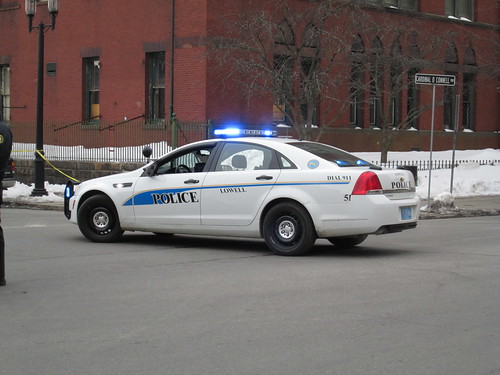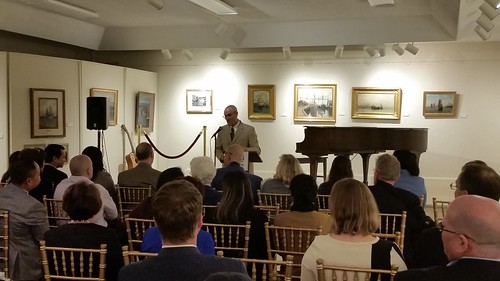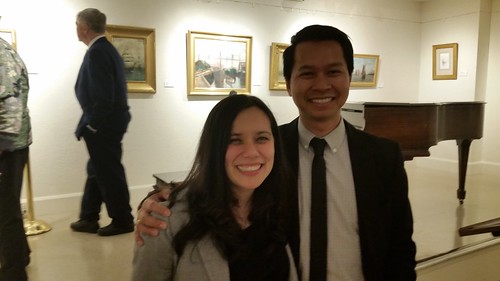Lowell Week in Review: May 14, 2017

“Murder Manhunt in Lowell”
For two days this week, that was the lead story on every news outlet in the region. I won’t get into the crime or the police response right now. Instant analysis might be OK for sporting events, but complex societal issues like violence against women, criminal recidivism, the place of guns in society, and police strategy and tactics should not come immediately on the heels of a jarringly violent event like the one that just happened in Lowell. More time, perspective and context make for more useful analysis.
One thing that doesn’t need to wait is recognizing the impact crimes like this have on the perception of Lowell held by people outside the community. Friday morning at the registry of deeds we fielded quite a few calls asking if we were open since news reports said the city was “locked down.” Others said they were sending documents to us by courier, rather than bringing them in person, since they didn’t feel safe coming to Lowell.
Forty-eight hours straight of sensation-seeking television news will do that, as will always-on social media. And after four decades worth of cop shows and reality TV, I think many brains are now wired to view life in the most dystopian way. Because of that, it doesn’t take much to get people viewing a place that has murders and manhunts as a place to be avoided at all costs.
So how does a place like Lowell, which aspires to be a “destination city,” fight back? First, we have to accept that the same things that make cities great places can also make them places with a certain amount of criminal activity. This is nothing new. In my office, I have a replica of the front page of the September 1898 newspaper reporting the dedication of the “new” Lowell Superior Courthouse on Gorham Street. It shares the front page with a headline that reads “Man Shot on Middlesex Street.”
There will always be crime, the challenge is to minimize it and to put it in context. Many people who live here do that quite naturally, because all the good things about the community outweigh the crime that does occur. But people unfamiliar with Lowell often have that blank slate filled in by news coverage like we had this week. We’ll never change that. It is what it is. That’s why I’ve always been skeptical of expense marketing campaigns to promote Lowell to those who live in Boston and beyond. One TV news live shot from JFK Plaza cancels out a half million dollars in billboards and display ads.
Our efforts are better spent locally, in Lowell itself and in the surrounding communities. Nearly 300,000 people live in Lowell and the towns that directly touch it. Extend that circle out a bit further and you easily hit half a million. And many who live within that zone have existing connections with Lowell. They have lived here, worked here, or have already visited to see the Spinners or the MRT, and have had good experiences. They know that visiting Lowell is not a journey that will jeopardize their safety.
Getting these people, especially those living in Lowell itself who rarely venture downtown, to come to there, is where our promotional efforts should be focused. Because once they are there, they will find that it’s a great place, with interesting architecture and public art, a good mix of stores and restaurants (although there could always be more of them), and a canal system that tourism officials in most similar cities in America would love to have.
Promoting unique local festivals, as the city seems to be doing, is a good start. But the best approach might be to simply encourage and support a bottom-up approach with more events like the Lantern Lighting Festival on Ecumenical Plaza a few weeks ago, or last summer’s Kinetic Sculpture Race. An enormous amount of effort went into both, but both felt more organic and original than some bigger and better known (and costlier) events. And we can’t forget the continuing effort to light-up the canals, which should not be seen as the reason for an occasional special event, but as a day-to-day illumination of our most impressive buildings and water features.
The biggest thing lacking in downtown Lowell is people. With more people on the sidewalks, roaming around and looking at things, restaurants and shops will gain more customers. And more importantly, a critical mass of people in downtown will bring in even more people, powered by word-of-mouth, the most effective advertising tool ever devised. We are social animals. We like to be with others. Let’s find ways to get people from Lowell’s neighborhoods and from Dracut, Tewksbury, Billerica, Chelmsford and Tyngsborough to come to downtown. Once that happens, those who live further away will follow.

JIm Wilde welcoming guests to 31st annual Merrimack Valley Housing Partnership gathering
Merrimack Valley Housing Partnership
Congratulations to the Merrimack Valley Housing Partnership on its 31st anniversary celebration, held last Thursday at the Whistler House. Executive Director Jim Wilde began his remarks by remembering the late Mary Noon, the organization’s longest serving board member, for her many contributions. Jim next thanked Middlesex Community College and the Cambodian Mutual Assistance Association, two entities that work closely with the Housing Partnership. He also acknowledged the contributions of the city of Lowell and of the Lowell Development and Finance Corporation which have together provided down payment assistance to 1450 first time home buyers.
Jim said that this past year was one of the most successful ever for the Housing Partnership. Eight hundred families went through the 10-hour long home buyer class, and forty percent of them were female heads of household.

Lianna Kushi and Sovanna Pouv
The importance of this program was highlighted by the guest speakers for the evening, Sovanna Pouv and Lianna Kushi – he the executive director of CMAA and she the executive director of E-for-All – who recently became the first in their families to achieve homeownership. They explained that owning a home was a dream they shared, but they also felt that their dream would have to wait many years to be realized. Still, they decided to enroll in a first time home buyer class at the Merrimack Valley Housing Partnership. There, the “perfect team” of professionals and supporters they were able to assemble helped them find their “perfect home” in just six months. Lianna and Sovanna explained that the Merrimack Valley Housing Partnership gave them the support and education needed to approach each stage of the home-buying process with confidence and good judgment. They closed by saying that Lowell is a wonderful place, and thanked MVHP for helping them become home owners in the city.
Ten years ago Lowell was racked by the foreclosure crisis. More than five percent of first time home buyers in the city lost their homes to foreclosure. But only one percent of graduates of first time home buyer programs suffered a similar fate. This program’s approach has been so successful, that legislators should consider making it mandatory for all first time home buyers, and that should be done soon. While the real estate market may seem to be booming, it’s not. Houses that go on the market sell quickly and often for the asking price or more, but that’s a function of the scarcity of houses that go up for sale. A big part in that limitation is that so many people who bought or refinanced during the peak of the real estate boom are still under water on their mortgages (meaning they owe more to the lender than the house is now worth) and so are unable to sell. So the scars of that ten-years ago foreclosure crisis are still with us. We should do everything we can to prevent it from happening again. A mandatory first time home buyer program is a good start.
Upcoming City Council Meeting
City Manager Murphy will formally present the Fiscal Year 2018 budget to the city council on Tuesday night. I believe the council will schedule a public hearing on the budget at a future date.
Here are council motions on the agenda;
- Samaras-Request the City Manager have proper department install crosswalk at corner of Fletcher and Bower Streets.
- Samaras – Req. City Mgr. have Superintendent Taylor (LPD) address City Council regarding current problems that have occurred in the City over the past several weeks; in addition have Supt. Taylor inform Council of crime prevention strategies during the summer months.
- Rourke/C. Mercier – Req City Council have discussion on Eminent Domain pertaining to 75 Arcand Drive and have a roll call vote pursuant to an Order of Taking.
- Leary/C. Leahy – City Council request the City Manager to provide a list of work that needs to be done in a timely manner at Lowell High School.
- Leary -City Council request the City Manager provide an update regarding sidewalk crossing Chelmsford Street and Inland Street. In addition, provide an update regarding the improvements planned for Inland Street.
- Leary – City Council request the City Manager provide an update regarding the feasibility for combining the Public Works and Lowell Public Schools Custodian departments into a Maintenance Department.
- Kennedy-Request the City Manager have the proper department add Sparks Street to the re-pavement list.
- Kennedy – City Council request the City Manager provide the City Council with a report regarding the process for appealing unusually high water and sewer bills.
Focusing on incrementally improving Lowell is a better way to attract people than promotions or mega projects. Painting crosswalks, fixing sidewalks,street trees, protected bike lanes, easing regulations for small scale development, will unleash local private capital to improve our city.
We need self-gentrification not Jimmy John gentrification to give people opportunity and strengthen neighborhoods.
Sidenote:It amazes me that the city would allow Ymittos candles on Dutton St to be converted into condos. All the talk about “commercial only” in the HCD is bs. That block of buildings is one of the biggest missed opportunities for creating jobs and connecting downtown to the Acre. All because we let cars dominate our land use decisions.
You are right, Dick; the success of downtown is primarily about Lowellians themselves, people living in downtown and near it. We should;
Double the number of homes in the downtown. Build up, and ease off on the parking restrictions downtown. We can either have the density to supportnealkable urbanism, or we can have enough parking to meet the expectations of the median American. We cannot have both.
Re-establish the pedestrian links between downtown and the surrounding neighborhoods that were severed or eroded during the second half of the last century. Downtown grew up dependent on heavy pedestrian traffic from the rest of the city, and the neighborhoods grew up dependent upon a nearby downtown that people walked to. Both are suffering from a lack of such connection.
Encourage neighborhood business owners to expand downtown. Places like Cupples Square are bursting at the seams. The city’s efforts to revitalize those districts have been a spectacular success. Now, it should shift from encouraging the clustering of ethnic businesses in those neighborhood districts, and invite them downtown.
Great points Joe. I think it’s important to note we don’t need to build up too high. 3-4 stories is ideal in keeping with the character of downtown. Most importantly the ground floors need to be built at a pedestrian scale.
Unleash the parking lots!